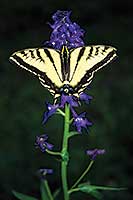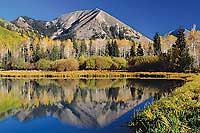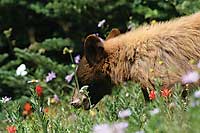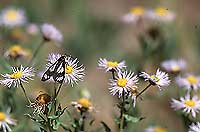 John Muir, considered one of the patron saints of American environmentalism in the early twentieth-century, was a Scottish-American advocate for protection of wild places throughout the West. One of his famous quotes, “I hear the mountains calling and I must go,” rings true today when the heat of summer lays heavy over the Canyon Country landscape. Fortunately, the nearby La Sal Mountains offer easy access to get some respite from the heat.
John Muir, considered one of the patron saints of American environmentalism in the early twentieth-century, was a Scottish-American advocate for protection of wild places throughout the West. One of his famous quotes, “I hear the mountains calling and I must go,” rings true today when the heat of summer lays heavy over the Canyon Country landscape. Fortunately, the nearby La Sal Mountains offer easy access to get some respite from the heat.
Rising to nearly 13,000 feet, the La Sals may not be Muir’s Sierras, but they are wild and inviting in their own right. The second-highest range in Utah, the mountains are flanked by forests of pine, fir, spruce, and aspen before giving way to alpine meadows bursting with summer wildflowers. Roads and trails provide access for those on foot, in the saddle, riding bikes, or driving. Trailheads and campgrounds, subalpine lakes and cascading streams, whispering pines and quaking aspens are just some of the attractions to discover while exploring the peaks.
The mountains themselves are the result of uplift, intrusion by igneous material, and erosion. Imagine a blister of magma, rising through factures in sedimentary layers and fracturing or forcing these overlying rock layers upwards, but not erupting out to the surface like many Pacific Northwest volcanoes. Some of the rising igneous material found lateral or vertical seams much the way a tree’s branches extend outwards from the trunk. Polish the peaks off with a period of glaciation started during the Pleistocene period some 2 million years ago, and currently battling the forces of erosion, the peaks stand today.
Driving up the La Sal Mountain Loop Road from the south end of Moab, its easy to note the transition of plant communities the higher one drives. The desert pinyon/juniper forest which dominates so much of the lower elevation gives way to a mountain  shrub community comprised of Gambel’s oak, serviceberry, wild rose, and other shrubs and forbs. Continuing upwards on side roads that lead to Warner Lake or Oowah Lake, one passes through glades of quaking aspen with their clown-white bark, and into the darker forests dominated by Douglas fir, Engelmann spruce, and subalpine fir. The aspens in particular bear the scars of long-gone lovers and wandering sheepherders. These “aspen glyphs” have historical significance from an era where this type of activity was commonplace but is no longer in fashion.
shrub community comprised of Gambel’s oak, serviceberry, wild rose, and other shrubs and forbs. Continuing upwards on side roads that lead to Warner Lake or Oowah Lake, one passes through glades of quaking aspen with their clown-white bark, and into the darker forests dominated by Douglas fir, Engelmann spruce, and subalpine fir. The aspens in particular bear the scars of long-gone lovers and wandering sheepherders. These “aspen glyphs” have historical significance from an era where this type of activity was commonplace but is no longer in fashion.
Open fields and mountain meadows that dot these higher elevation woods are often painted with an assemblage of wildflowers which race through their lifecycles to set seed before winter’s grip grabs ahold of them. These fields of flowers attract, in turn, pollinators such as butterflies, moths, bees, beetles, flies, and “winged jewels” such as broad-tailed and rufous hummingbirds. Summer is their season so they make the most of it.
 Continuing over the mountains at Geyser Pass, one begins a descent into the drier side of the La Sals. Aspen groves, ponderosa pine forests, open grasslands, and more mountain shrub communities extend downwards along the mountain’s flank.
Continuing over the mountains at Geyser Pass, one begins a descent into the drier side of the La Sals. Aspen groves, ponderosa pine forests, open grasslands, and more mountain shrub communities extend downwards along the mountain’s flank.
In turn, these plant communities attract wildlife such as bear, elk, deer, coyote, small mammals, birds, reptiles, amphibians, and other species. No trip into the mountains is complete without seeing some type of wildlife.
So, when the mountains call, heed their invitation like John Muir.